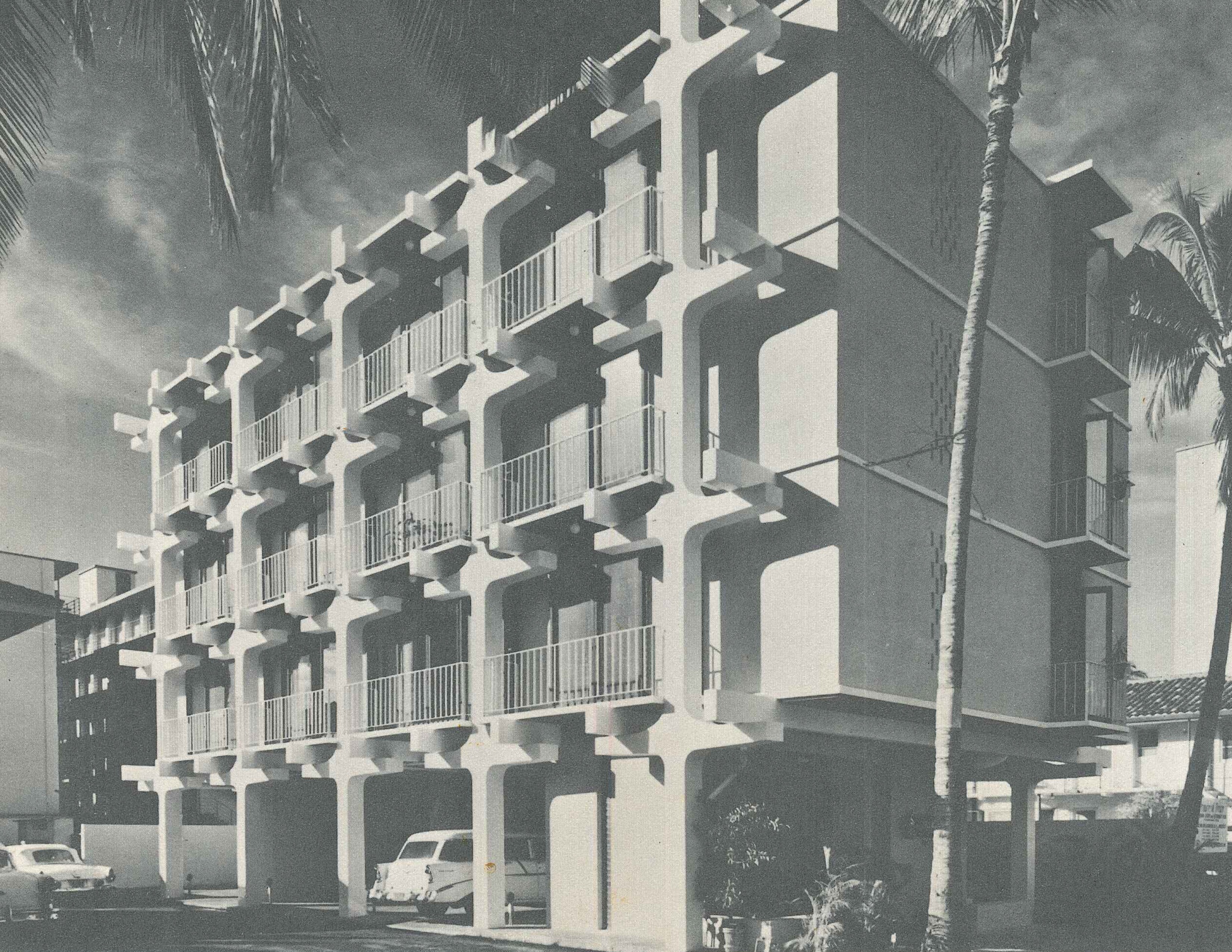ALFRED A. YEE
Perspective: Architectural History
DON HIBBARD
Don Hibbard is an architectural historian and the former Deputy State Historic Preservation Officer for the State of Hawaii. He is the author of multiple books, including The View from Diamond Head and Designing Paradise.
Through his work with pre-stressed concrete Alfred A. Yee opened a multitude of new design opportunities for architects and provided developers with more cost-effective ways of building. Although pre-stressed concrete was successfully developed in the 1920s, it was not until the 1930s that it was used in the United States as a construction material, with the Preload Corporation fabricating large tanks and pipes using circular pre-stressing methods. And it would be another decade, with the design and construction of the Walnut Lane Bridge in Philadelphia (1949-1951), before linearly pre-stressed concrete technology was incorporated in major structures in the United States.
Yee developed many solutions for the manufacture and use of pre-stressed beams, joists, piles, and floor systems, patenting many innovative means of safely connecting these various building elements to one another. Such connections were the key to opening up the use of pre-stressed concrete in large-scale buildings, and throughout the 1950s and early 1960s, Hawaii led the nation in pre-stressed building construction. Following the Prestressed Concrete Institute’s annual convention in San Francisco in 1963, more than 100 delegates journeyed to Hawaii for a post-convention meeting to see first-hand the latest developments in their field.
Among the projects they saw was the 14-story Diamond Head Apartments (1957), designed by Vladimir Ossipoff and engineered by Yee. It is the earliest known multi-story building in the United States to utilize pre-stressed concrete structural members. Pre-stressed concrete I-beams with 40-foot spans support the floors and open individual apartments to more flowing spatial arrangements, while reducing the need for structural columns.
Yee developed many solutions for the manufacture and use of pre-stressed beams, joists, piles, and floor systems, patenting many innovative means of safely connecting these various building elements to one another. Such connections were the key to opening up the use of pre-stressed concrete in large-scale buildings, and throughout the 1950s and early 1960s, Hawaii led the nation in pre-stressed building construction. Following the Prestressed Concrete Institute’s annual convention in San Francisco in 1963, more than 100 delegates journeyed to Hawaii for a post-convention meeting to see first-hand the latest developments in their field.
Among the projects they saw was the 14-story Diamond Head Apartments (1957), designed by Vladimir Ossipoff and engineered by Yee. It is the earliest known multi-story building in the United States to utilize pre-stressed concrete structural members. Pre-stressed concrete I-beams with 40-foot spans support the floors and open individual apartments to more flowing spatial arrangements, while reducing the need for structural columns.


Diamond Head Apartments
Left Photo Credit: Robert Wenkam.
Right Photo Credit: Unknown
 Diamond Head Apartments. Photo Credit: Unknown
Diamond Head Apartments. Photo Credit: Unknown
Other dramatic Yee projects of the period included the Tree House Apartments (1959), with its distinctive “tree columns” that boldly articulated the building’s structural system, and the Sandalwood Apartments (1964) with its innovative domino system of construction, which won Yee an award from the Prestressed Concrete Institute in 1964. At the time of the 1963 meeting both the Kahala Hilton (1964) with its articulated post-and-beam construction and the Ilikai Hotel (1964) were under construction. Both these buildings stand on pre-stressed concrete piles, which revolutionized the construction of tall buildings in Hawaii, as the resiliency of the piles allowed them to be driven into the ground until bedrock was hit, an important consideration in Hawaiʻi where uneven volcanic substrata can result in a difference of as much as 50 feet in the driven length of piles spaced only three feet apart.

Tree House Apartments
Due to Yee’s innovations in pre-stressed concrete building technologies, high-rise construction time and budgets were substantially reduced. The 38-story Ala Moana Hotel (1970) went up at the rate of one floor every two and a half days. When completed, it was the world’s tallest precast concrete building and remained so through 1993.